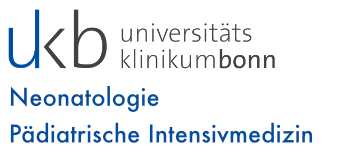Ihr Ansprechpartner
Projektbezeichnung: Seltene angeborene Fehlbildungen der Lunge, des Gastrointestinal- und Urogenitaltraktes.
Seltene angeborene Fehlbildungen der Lunge, des Gastrointestinal- und Urogenitaltraktes kommen bei weniger als 5 von 10.000 Neugeborenen vor. Unsere Forschung befasst sich mit den genetischen Ursachen dieser Fehlbildungen. Dazu zählen Zwerchfellhernien (congenital diaphragmatic hernia, CDH), cystisch-adenomatoide Malformationen der Lunge (CCAML), angeborene intestinale Atresien (z.B. Ösophagus- oder Duodenalatresien) sowie die schwersten Formen des uro-rektalen Fehlbildungsspektrums (anorektale Malformationen, lower urinary tract obstructions (LUTOs) und der Blasenekstrophie-Epispadie Komplex (BEEK)).
Informationen zu Klinik und Genetik
Aufgrund der Seltenheit und oft individuellen Form dieser Fehlbildungen sowie der bestehenden Begleiterkrankungen und/oder –Anomalien stellen diese Fehlbildungen eine große Herausforderung an die behandelnden medizinischen Fachdisziplinen dar. So liegen z.B. bei Patienten mit Ösophagusatresien in über 50% der Fälle weitere assoziierte Fehlbildungen vor. Unter diesen Fehlbildungen sind mit 29% angeborene Herzfehler die häufigsten, gefolgt von anorektalen Malformationen (ARM) (14%), Fehlbildungen des Urogenitaltraktes (14%), weiteren Fehlbildungen des Gastrointestinaltraktes (13%), des Skelettsystems (10%) und der Atemwege (6%).
Um die postnatale Mortalität und Morbidität zu senken beginnt bei einem Teil der durch uns beforschten Fehlbildungen die Patientenversorgung oftmals schon vorgeburtlich mit eventuell notwendigen Interventionen am Fetus. Ein Beispiel ist die intrauterine Therapie bei Kindern mit Zwerchfellhernie, bei der eine fetoskopische Ballonocclusion der Trachea beim Feten durchgeführt wird, um das Lungenvolumen zu erhöhen und die Überlebenschancen der Kinder zu verbessern. Im Falle von LUTOs werden sog. Pigtailkatheter in die Harnblase zur Entlastung des oberen Harntrakts und der Niere eingelegt.
Informationen zum Forschungskonzept
Das Ziel der molekulargenetischen Untersuchungen unserer Arbeitsgruppe ist die systematische Identifizierung der ursächlichen genetischen Faktoren dieser seltenen Fehlbildungen. Da diese Fehlbildungen genetisch heterogen sind, beinhalten unsere systematischen Untersuchungen sowohl die Suche nach hochpenetranten Mutationen (monogen bedingte Fehlbildungen) als auch nach sog. Varianten mit geringer Penetranz, die lediglich für die jeweilige Fehlbildung disponieren (multifaktoriell bedingte Fehlbildungen).
Zur Identifizierung hochpenetranter Mutationen verwenden wir daher zum einen hochauflösende SNP-Arrays mit dem Ziel ursächliche Kopienzahlveränderungen (Verlust oder Zugewinn an genetischem Material) zu identifizieren, sowie das sog. „Next Generation Sequencing (NGS)“ um kleinere Mutationen, z.B. Punktmutationen zu identifizieren.
Zur Identifizierung disponierender genetischer Varianten mit geringer Penetranz führen wir genomweite Assoziationsuntersuchungen (GWAS) an umfangreichen Patientenkollektiven durch. Für einen Großteil der von uns beforschten Fehlbildungen stehen uns die weltweit größten Patientenkollektive zur Verfügung.
Unsere Forschungsarbeiten tragen damit zu einem besseren Verständnis der biologischen Mechanismen normaler und gestörter embryonaler Entwicklung der menschlichen Organsysteme bei. Die Identifizierung hochpenetranter ursächlicher Mutationen eröffnet zudem neue diagnostische Möglichkeiten und erlaubt eine genaue Einschätzung des Wiederholungsrisikos für die betroffenen Familien.
